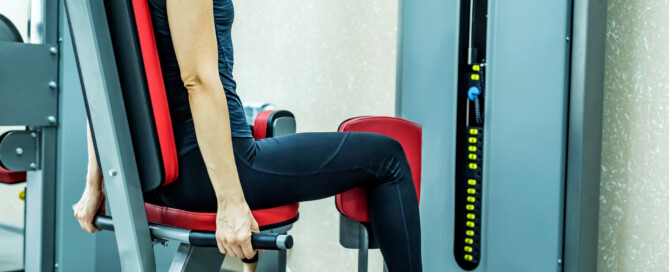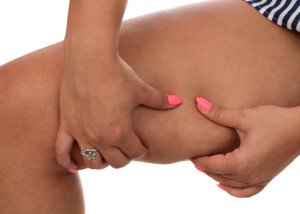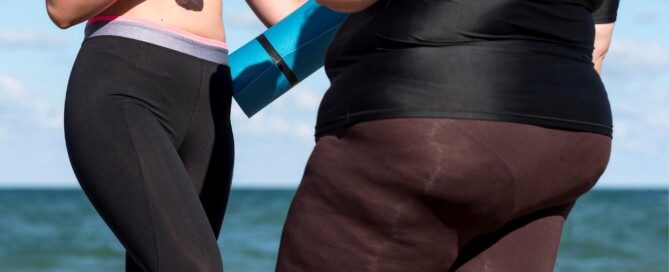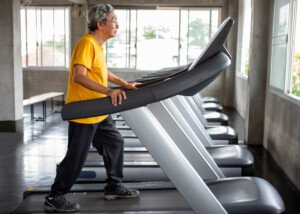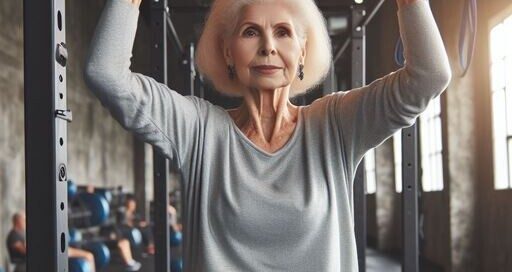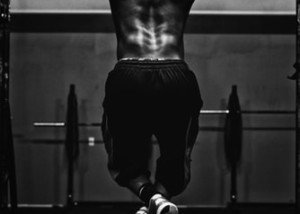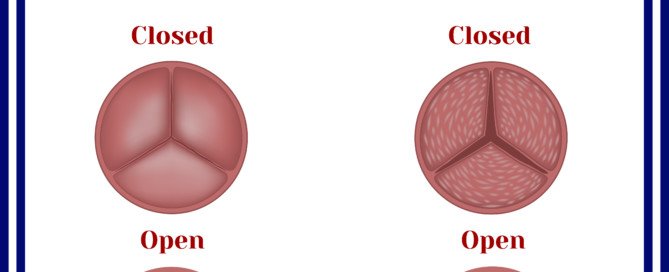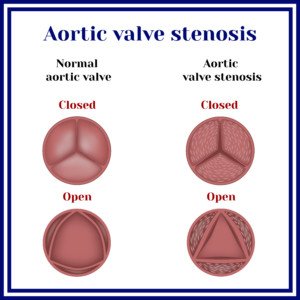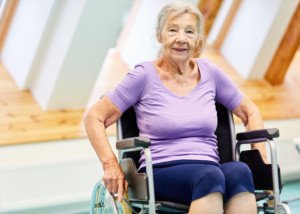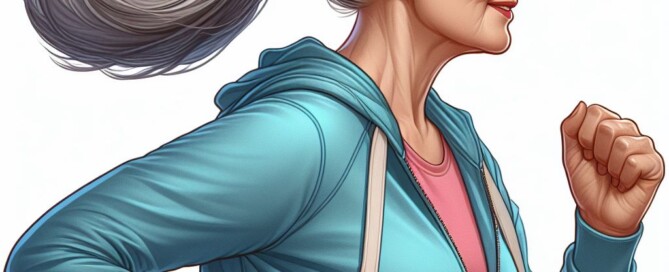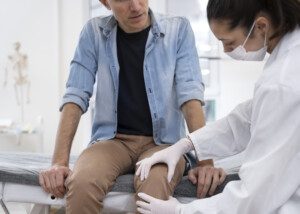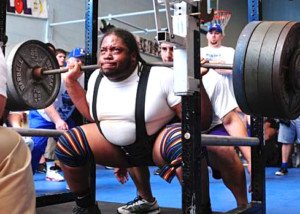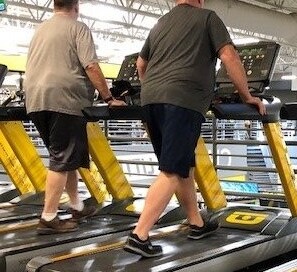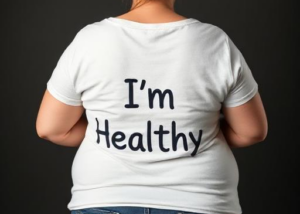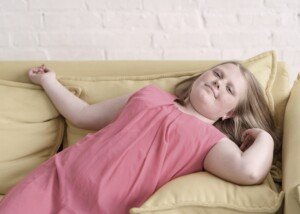Why Do Women Love the Inner Thigh Machine?
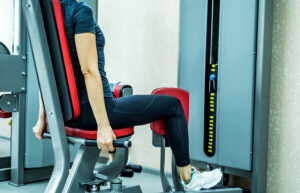
Isn’t it amazing so many women love the inner thigh (adductor) machine, yet are still blind to the failure of this machine to trim big thighs? (more…)
Feel too Fat and Clumsy to Exercise? Solutions You’ll Love
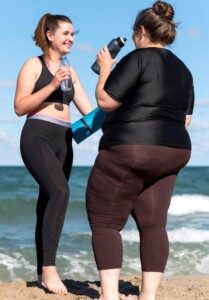
If you feel too fat & clumsy to exercise & have NO idea where to start, there are several kinds of exercise where you won’t have to worry about falling or stumbling. (more…)
Is It Safe for Elderly Women to Try Pull-ups?
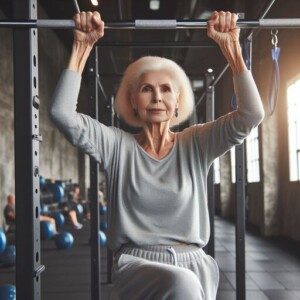
If you’re an elderly woman who’d like to learn to do pull-ups, then go for it!
Elderly age, in and of itself, does not make it harmful for a woman to train at pull-ups or chin-ups.
“There’s no specific contraindication for an elderly woman without shoulder issues to try chin-ups,” says D’Wan Carpenter, DO, a board certified physical medicine and rehabilitation physician with SIMEDHealth in FLA.
“If she has never tried any exercise like this before, it would be best to work her way up to it.
“She will have to understand she will be relying solely on her arms to be able to lift the rest of her body. As long as both upper extremities are injury-free she is safe to try chin-ups.”
Brittle Bones
In fact, if a woman over age 65 has osteoporosis (brittle bone disease), her contraindications are impact exercise like running, jumping and certain forms of other aerobic activity.
Pull-up/chin-up training is a non-impact activity that’s safe on the joints.
Built-In Safety of Pull-ups
And I’ve got news for you: It’s not easy to overdo it with pull-up training. It’s pretty much basically this: You either can or you can’t do it.
It’s not like, say, the bench press, where you can keep straining and straining with endless sets and countless repetitions because you can adjust the weight of the barbell. You can then end up hurting a shoulder joint.
But with chin-ups, once you begin fatiguing, you have no choice but to quit and recharge fully before your next set, since you can’t adjust your body weight like you can adjust a barbell weight.

Depositphotos.com
Though sets can be overdone in terms of volume if a woman uses a gravity-assist machine, I strongly urge against this device, as it’s a poor way to learn to do a chin-up or pull-up. (More on that coming up)
So the issue isn’t the safety of pull-up and chin-up training for an elderly woman. The issue is her fitness level at the time she decides to pursue this goal.
Another issue is her body weight. If she’s overweight, learning chin-ups will be a lot more difficult than if she’s, say, 125 pounds.
Requirements for an Elderly Woman to Learn a Chin-Up
“Elderly” literally means over age 65, though the senior citizen discount at retailers begins at age 55; and age 55 and over is what often applies to senior housing. But you get the point.
A woman over age 55 or 65 who has a base fitness level from long-term strength training, and who’s not overweight, is an excellent candidate to learn chin-ups.
She is more likely to injure her elbows playing golf or tennis, by the way.
Next, she needs a healthy pair of stable shoulders; no rotator cuff issues or painful bursitis.
A requirement is the ability to dead hang from a bar for 20 seconds. This can take a while to build up to.
Once a senior woman is able to dead hang for 20, maybe 30 seconds, she will be that much closer to developing the strength to pull herself halfway up.
Assist Machines
Stay away from these. Though this article is about whether or not chin-up training is safe for the elderly woman, I’m going to briefly explain why assist machines are useless.
They skewer the position that the body naturally hangs in when hanging from a bar without the feet touching anything below.
If you’re doing pull-ups or chin-ups while your feet are connected to a moving platform that subtracts body weight, this will fail to mimic the natural hanging position.
In order to develop sufficient strength to pull yourself up with your feet dangling in the air, you must train with your feet dangling in the air.
So how do you train if you can’t even pull up one inch?
I’ll end up with a 2,000-word post if I explain everything, but suffice it to say that you must develop strength with cable pull-down motions, rowing motions and core-strengthening activities like pushups, kettlebell swings and planks.
And then practice your dead hanging.
At some point you’ll feel ready to attempt a pull. Have a partner place their hands on your waist to help you. You can also practice with tension bands.
Another way to practice is to have a stool at your feet so that you can pull up while your feet are still on the stool to help subtract body weight.
Unlike the assist machine, this subtraction won’t skewer your body’s natural hang position enough to thwart your training.
It is perfectly safe for an elderly woman, under the aforementioned circumstances, to learn how to do chin-ups and pull-ups.
 Dr. Carpenter is one of the nation’s top board-certified physical medicine and rehabilitation physicians, a national speaker, medical legal expert and independent medical examiner. She is founder and Chief Medical Officer of DJC Physical Medicine Consultants. Follow Dr. D’Wan on Twitter.
Dr. Carpenter is one of the nation’s top board-certified physical medicine and rehabilitation physicians, a national speaker, medical legal expert and independent medical examiner. She is founder and Chief Medical Officer of DJC Physical Medicine Consultants. Follow Dr. D’Wan on Twitter.
 Lorra Garrick is a former personal trainer certified through the American Council on Exercise. At Bally Total Fitness she trained women and men of all ages for fat loss, muscle building, fitness and improved health.
Lorra Garrick is a former personal trainer certified through the American Council on Exercise. At Bally Total Fitness she trained women and men of all ages for fat loss, muscle building, fitness and improved health.
.
Top image: ©Lorra Garrick
The Youngest Age You Can Teach Children to Deadlift

What’s the youngest a child can learn how to deadlift?
There is no research on this, so any fitness expert’s take on this is going to be based on anecdotal evidence. (more…)
TAVR without General Anesthesia Has Better Results
Before you have TAVR, you should find out if your surgeon is set on using general anesthesia, because moderate sedation has benefits that general does not have.
Many people fear “not waking up” after undergoing general anesthesia, and sometimes they automatically assume that this type of sedation is the only option for the surgery that they’re planning on — even TAVR.
General anesthesia requires a breathing tube while moderate sedation does not.
General anesthesia is sometimes used for TAVR.
Researchers at the Perelman school of Medicine at the University of Pennsylvania showed that moderate sedation was equally or better overall than general anesthesia for TAVR (transcatheter aortic valve replacement).
“I agree that conscious sedation is better for TAVR, as most of the patients treated with TAVR are elderly and at increased risk of cardiorespiratory complications and post-operative delirium with GA,” explains Asim Cheema, MD, who’s board certified in internal medicine, cardiovascular diseases and interventional cardiology by the American Board of Internal Medicine. Dr. Cheema is with Your Doctors Online, an online doctor chat site.
“In addition, TAVR is a minimally invasive procedure with percutaneous access and ideally managed with sedation for patient comfort and a plan for quick recovery with early ambulation post-procedure,” says Dr. Cheema.
“The multicenter 3M study has shown that in a selected population, a minimally invasive approach with conscious sedation and an expedited recovery plan allows most patients to be discharged within 24-48 hours post-TAVR.”
So why would there ever be a need for general anesthesia?
The researchers relied on the STS/ACC TVT RegistryTM — a database of TAVR patients in the U.S.
They looked at elective cases of femoral artery approach minus an incision to compare general anesthesia with moderate sedation.
This meant nearly 11.000 patients, with 1,737 having received moderate sedation.
Advantage of Moderate Sedation in TAVR
• A lower rate of mortality within 30 days of the procedure
• A lower rate of stroke within 30 days
• A shorter hospital stay
The conclusion was that moderate sedation is safe, effective and potentially the choice approach for TAVR.
This conclusion applies to all kinds of TAVR patients, not just the relatively healthy and younger ones.
What are the three levels of “moderate sedation” anyways?
• Isolated local anesthetic at the site of catheter entry
• Twilight sleep (conscious sedation) in which the patient is lightly asleep but responsive
• Monitored anesthesia—an unconscious but arousable state. In general anesthesia that patient cannot be aroused and not responsive to any external stimuli.

Your Doctors Online offers a free 7 day trial where you can ask a doctor questions online and get answers in minutes from anywhere 24/7. Learn more here. Dr. Cheema teaches and provides supervision to graduate students at the Institute of Medical Sciences, University of Toronto.
 Lorra Garrick has been covering medical, fitness and cybersecurity topics for many years, having written thousands of articles for print magazines and websites, including as a ghostwriter. She’s also a former ACE-certified personal trainer.
Lorra Garrick has been covering medical, fitness and cybersecurity topics for many years, having written thousands of articles for print magazines and websites, including as a ghostwriter. She’s also a former ACE-certified personal trainer.
.
Top image: Shutterstock/Mrs_Bazilio
Source: sciencedaily.com/releases/2016/05/160506100411.htm
Can Running Prevent Knee Replacement Surgery in Old Age?
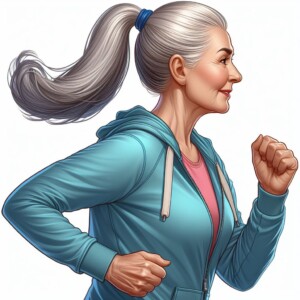
Maybe you should start logging in those running miles to prevent a need in older age for a total knee replacement surgery.
The myth is that typical running — and I don’t mean the degree of running that competitive runners do — grinds down the cartilage between the upper and lower leg bones where they meet in the knee. (more…)
Why Do Bodybuilders Do Isolation Work If It Can’t Build Mass?

So if isolation work can’t build muscle and only compound moves can, why do big bodybuilders do a lot of isolation exercises?
Isn’t this a contradiction? (more…)
Why Obesity Is Especially Bad for Tall People
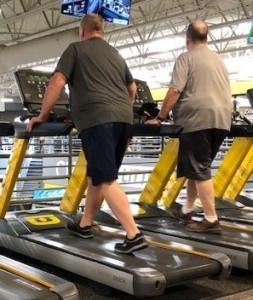
Being obese in combination with being tall creates a potential fatal medical condition that isn’t as likely in a shorter but obese individual.
You can’t change your height, but you can change your body fat percentage. The conclusion that being tall and obese may increase risk of blood clots is reported in Arteriosclerosis, Thrombosis and Vascular Biology: Journal of the American Heart Association (2010).
Body Positivity Does Not Prevent Blood Clots
So now we have yet one more reason to stop passing off excess body fat as “big bones” in a tall man and as “sexy curves” in a tall woman.
Obesity in and of itself is actually a well-known risk factor for DVT: deep vein thrombosis — a blood clot that can break loose and get into the lungs, causing a fatal pulmonary embolism.
Obesity is also an established risk for a pulmonary embolism. DVT and pulmonary embolism are collectively known as venous thromboembolism (VTE).
The report says that VTE risk is 5.28 times higher in obese and tall men; 2.57 times higher in normal-weight and tall males (at least 5′ 11.7″); and 2.11 times greater in obese but short men.
How significant was this risk increase in being both tall and obese?
The report says it’s comparable to other risk factors including oral contraceptive use and pregnancy.
What about women? The risk was 2.77 times higher in obese and tall; 1.83 times higher in obese and short; and for women over 5’6″ and normal weight, there was no increased VTE risk.
Senior study author Sigrid K. Braekkan, Ph.D., says that there actually may be a risk in “very tall” women, but there weren’t enough available for the study.
The researchers believe that the extra distance that blood must be pumped in a tall person’s calf muscle might cause reduced blood flow in the legs — raising the risk of a clot in obese individuals.
Obesity also creates increased abdominal pressure, which is believed to undermine the ability of the calf-muscle pump to return blood from the legs.
Obesity also causes persistent low-grade inflammation, which may make blood more prone to clotting.
Tall and Very Overweight? How to Lose the Unhealthy Extra Pounds.

Being tall does not make it any more difficult to reduce body fat percentage.
Thus, tall individuals should never use their height as an excuse for being “big” or “large framed,” when in actuality, they are carrying excess body fat.
As a former personal trainer, I must emphasize the importance of refusing to settle for a “big” (overweight) body just because you’re tall or just because you’ve been called “big boned” all your life.
My response to this big bone thing is this: Dinosaurs have big bones. Tall people have LONG bones. Long bones do not cause excess body fat. Overeating and under-exercising do.
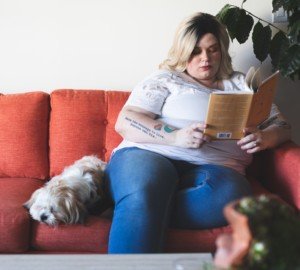
To reduce the risk of blood clots (and this is for women as well), you must engage in regular strength training, focusing on large muscle groups with exercises such as the deadlift, squats, flat and incline bench press, flat and incline dumbbell press, overhead presses and pulling exercises such as the lat pull-down and seated cable row.
To further lower the risk of blood clots and fight obesity, you must engage in regular aerobic exercise plus practice portion control of the foods that you normally overeat.
 Lorra Garrick has been covering medical, fitness and cybersecurity topics for many years, having written thousands of articles for print magazines and websites, including as a ghostwriter. She’s also a former ACE-certified personal trainer.
Lorra Garrick has been covering medical, fitness and cybersecurity topics for many years, having written thousands of articles for print magazines and websites, including as a ghostwriter. She’s also a former ACE-certified personal trainer.
.
Source: sciencedaily.com/releases/2011/04/110428162304.htm
Teaching Child the Lost Puppy Lure by Sex Offenders

Have you drilled your child about the lost puppy ruse that predators often use to lure children into harm’s way? You can easily teach your child not to fall for this ploy. (more…)
Why Does the Ab Wheel Make My Armpits Hurt?


